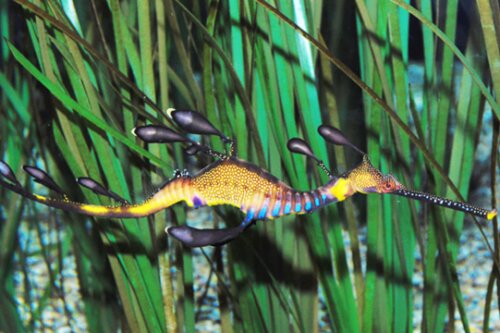Promoter: Sam Van Wassenbergh

Subject: Syngnathiform fishes, such as pipefish and seahorses and their relatives, depend on an extremely rapid dorsal rotation of their head to bring their mouth close to their prey. In this way, the prey has little chance to escape when they get sucked in. Previous research showed that compared with straight-bodied pipefish, seahorses showed an additional forward-reaching component in the path travelled by the mouth during their strikes at prey. Based on biomechanical modelling, this is hypothesized to result from their horse-like head posture, which therefore would be an adaptation to increase strike distance. A test of this hypothesis would be to study a species with a head posture that is between a pipefish and a seahorse: the weedy seadragon (Phyllopteryx taeniolatus). Does this species show a mouth path pattern that is between those of pipefish and seahorses? In this MP project, high-speed videos will be collected from leafy and weedy seadragons in public aquaria in Europe, and their cranial kinematics will be analysed and compared with existing datasets from pipefish and seashorses.
Techniques: high-speed videography, comparative kinematical analysis